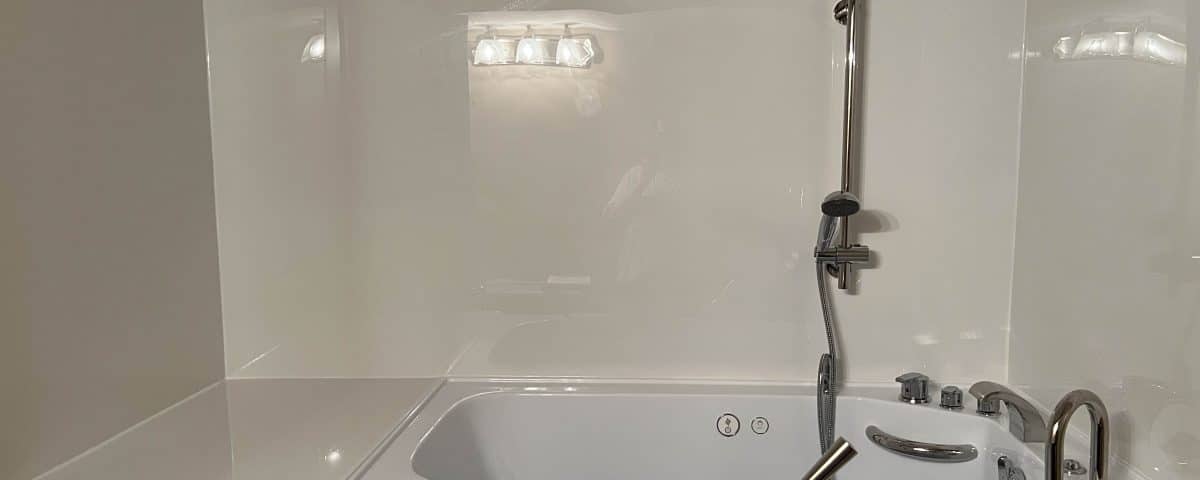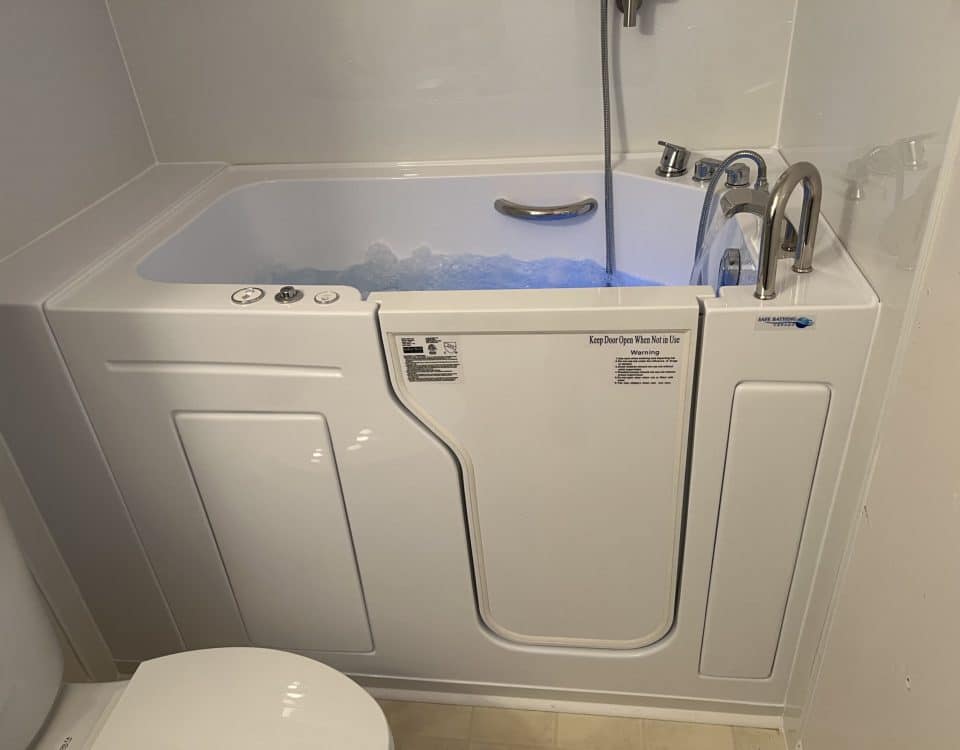
Improve Your Life With Walk-In Tub Hydrotherapy
September 9, 2024Choosing between an accessible bathtub and an accessible shower is a crucial decision for those looking to improve safety and convenience in their bathroom. Accessible bathing solutions are increasingly common, offering peace of mind to people with mobility issues and those simply wanting a safer bathing environment. Both walk-in tubs and walk-in showers offer unique benefits—but which will be the best for your needs? Below, we’ll explore the differences and advantages of each to help you make an informed choice.
Benefits Of A Walk-In Tub
Walk-in tubs are specifically designed to enhance bathing safety and comfort, making them an excellent choice for individuals with limited mobility or chronic conditions.
Safety Features: Walk-in tubs have built-in safety features such as grab bars, anti-slip flooring, and easy-access doors, which eliminate the need to step over a high bathtub edge. This reduces the risk of falls, making it a safer option for seniors or people with balance issues. The seating inside the tub ensures users remain stable while bathing.
Hydrotherapy: Many walk-in tubs offer hydrotherapy options, such as air and water jets, which provide therapeutic benefits. Hydrotherapy can help alleviate muscle pain, improve circulation, and relieve arthritis symptoms, making it particularly beneficial for those with chronic health conditions.
Ease of Use: The low-entry door and built-in seating make it easier for individuals to enter and exit the tub without assistance. This feature allows people to maintain independence and dignity while bathing.
Comfort: Walk-in tubs provide a relaxing experience, with deep soaking options that allow users to immerse themselves fully. For those who enjoy a warm bath to unwind, the added comfort and safety features make a walk-in tub a luxurious choice.
Independence: Walk-in tubs offer users the ability to bathe independently without the need for assistance. This independence is crucial for maintaining dignity and privacy, especially for individuals who may otherwise rely on caregivers for personal hygiene.
Benefits Of A Walk-In Shower
Walk-in showers are sleek, modern alternatives that prioritize accessibility and convenience. They offer a range of benefits for homeowners looking for an accessible solution that doesn’t compromise style.
Ease of Access: Walk-in showers provide a barrier-free design that is easy to access, even for wheelchair users or those with mobility aids. The low or zero-threshold entry eliminates the need to step over anything, reducing the chance of trips and falls.
Space-Saving: Walk-in showers take up less space than a bathtub, making them ideal for smaller bathrooms. Their compact design allows for more flexibility in bathroom layouts, giving homeowners the ability to make the most of limited space.
Customizability: Walk-in showers can be fully customized to fit your needs. You can add features such as handheld showerheads, grab bars, and seating to create a safe and convenient shower experience. Anti-slip flooring can also be installed to prevent accidents.
Quick and Convenient: Walk-in showers are perfect for those who prefer a quick, efficient bathing routine. Unlike a bathtub, which takes time to fill and drain, a shower offers a faster solution for people with busy lifestyles or those who need a more practical approach to bathing.
Modern Aesthetic: Walk-in showers add a modern, sleek look to any bathroom, making them a popular choice for homeowners looking to update their space. The clean lines and minimalistic design make walk-in showers a stylish and functional option.
Let’s Compare The Two:
Price
Walk-in tubs are generally more expensive than walk-in showers due to the additional features they offer, such as hydrotherapy jets and built-in seating. On average, a walk-in tub can cost anywhere from $2,000 to $10,000, depending on the model and features. Walk-in showers tend to be more affordable, with prices ranging from $1,000 to $5,000. Installation costs can also vary, with walk-in tubs typically requiring more extensive plumbing and electrical work.
Space
In terms of space, walk-in showers are the better option for smaller bathrooms. Their compact design allows homeowners to maximize their available space, whereas walk-in tubs take up more room due to their larger size. If you’re working with limited square footage, a walk-in shower may be the more practical choice.
Comfort
Walk-in tubs provide a more comfortable experience for those who enjoy soaking in warm water. The seating and deep soaking options allow users to fully relax while bathing. Walk-in showers, while convenient, don’t offer the same level of comfort for those seeking a leisurely bath. For those who prioritize comfort and relaxation, a walk-in tub is a clear winner.
Safety
Both walk-in tubs and walk-in showers prioritize safety but they serve different needs. Walk-in tubs are ideal for individuals with difficulty standing for long periods—thanks to the built-in seating and grab bars. Walk-in showers, particularly those with barrier-free designs, are perfect for wheelchair users or those needing easy access without obstacles.
Guest Friendliness
If your bathroom is shared with guests or other family members, a walk-in shower may be the more versatile choice. Walk-in showers cater to people of all ages and mobility levels, while walk-in tubs are more specialized and may not be as universally convenient. A walk-in shower is easier for everyone to use, making it a more practical option for households with multiple users.
Personal Preference
The decision between an accessible bathtub and an accessible shower ultimately comes down to personal preference. If you enjoy long, relaxing baths and benefit from hydrotherapy, a walk-in tub may be the best choice for you. However, if you prefer the efficiency of a quick shower and need to save space, a walk-in shower could be more suitable. Consider your lifestyle, health needs, and the layout of your bathroom when making your decision.
Conclusion
Both walk-in tubs and walk-in showers offer significant benefits in terms of safety, accessibility, and convenience. Your choice will depend on your specific needs, the available space in your bathroom, and your personal bathing preferences. Walk-in tubs provide unparalleled comfort and therapeutic benefits, while walk-in showers offer efficiency and space-saving solutions.
Whichever option you choose, enhancing your bathroom with accessible bathing solutions ensures a safer, more enjoyable experience for years to come. Contact Safe Bathing Canada today to explore your options and find the perfect accessible solution for your home.


